
A hernia on a wheel: is it possible to ride and what to do with it?
Content
- What is a hernia on a wheel?
- Reasons for the formation of a hernia on the wheel and its consequences
- What is the danger of a hernia on the tire?
- How does a hernia appear on a wheel?
- The first steps in the detection of a hernia
- Can you ride with a hernia on a wheel?
- Ways to repair a hernia on a wheel
- How long will the tire travel after repair
- How to protect the wheel from the appearance of hernias?
- Related videos
- Questions and answers:
Most motorists are familiar with the concept of wheel hernias since childhood, when tire swelling forms on a bicycle. This usually happened on the lateral part, but cases of butt formation are not uncommon.
Although the car is equipped with more durable tires, the load on them is also much higher, so it can happen that the wheel is bulging on one side. Let's consider why this can happen, and is it possible to operate a damaged wheel?
What is a hernia on a wheel?
Wheel herniation refers to the deformation of the rubber in the form of swelling. This damage can appear both on the side of the tire and on the tread.
Depending on the location of such damage, it can cause jolts, beating, vibration hum and other effects that make driving unsafe, especially at high speeds.
Unlike a puncture, a hernia is determined by examining an inflated tire. The main reason for the appearance of such damage is a strong blow, due to which the reinforced layer is torn and the rubber swells from high pressure.
It is more difficult to notice a hernia on the inside of the wheel. With such damage, while driving at high speed, the wheel will vibrate in a horizontal direction (wags from side to side).
Reasons for the formation of a hernia on the wheel and its consequences
A hernia swells up due to the fact that the textile part of the product begins to deteriorate or is damaged as a result of an impact. If the driver does not pay attention to this damage, the cord will continue to collapse due to high pressure. The bulge will continue to enlarge, which can subsequently cause the tire to burst. A sharp pop can frighten others, but if the speed of the transport is high, the car will abruptly change its trajectory, which often causes an accident on any road.
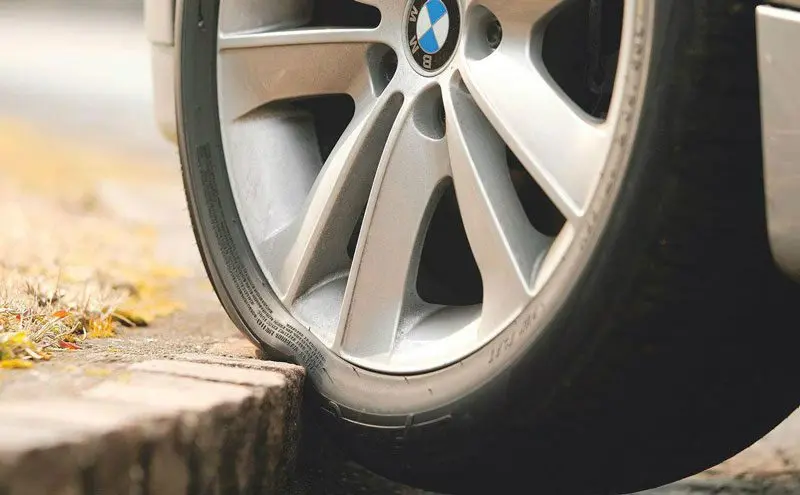
For this reason, before getting behind the wheel, every motorist should periodically inspect his car and try to identify such malfunctions in advance. The external hernia will be visible immediately. If a problem occurs while the car is driving, then at speed the driver will clearly feel the beating in the steering wheel or rear of the car, as if the wheels are out of balance. In fact, this is an imbalance, as the tire has changed its shape. If the movement of the car suddenly began to be accompanied by a beat, you need to stop immediately and check what is the reason for this effect.
Here's what can cause rubber bulging:
- Poor-quality rubber - this usually manifests itself on budget products in the first year of operation;
- An old tire is more susceptible to hernia formation, since over time, the rubber's ability to withstand deformation decreases;
- Frequent overcoming of obstacles with sharp edges, for example, it can be a deep hole or a curb. The size of the bump will depend on the speed of the vehicle as well as the size of the obstacle;
- If the driver likes to park tightly against curbs, the side of the tire may be damaged. A shallow side cut will cause the inner rubber layer to be squeezed out through the gap;
- Often, damage appears in vehicles with lowered wheels - when a car runs into an obstacle at speed, in a flat tire it is more likely that the rubber will be tightly clamped between the disc and the pointed element on the road;
- Overcoming railway tracks and other obstacles at right angles;
- Poor road surface (holes with sharp edges);
- The bump also appears due to a strong impact from the wheel, for example, in an accident.
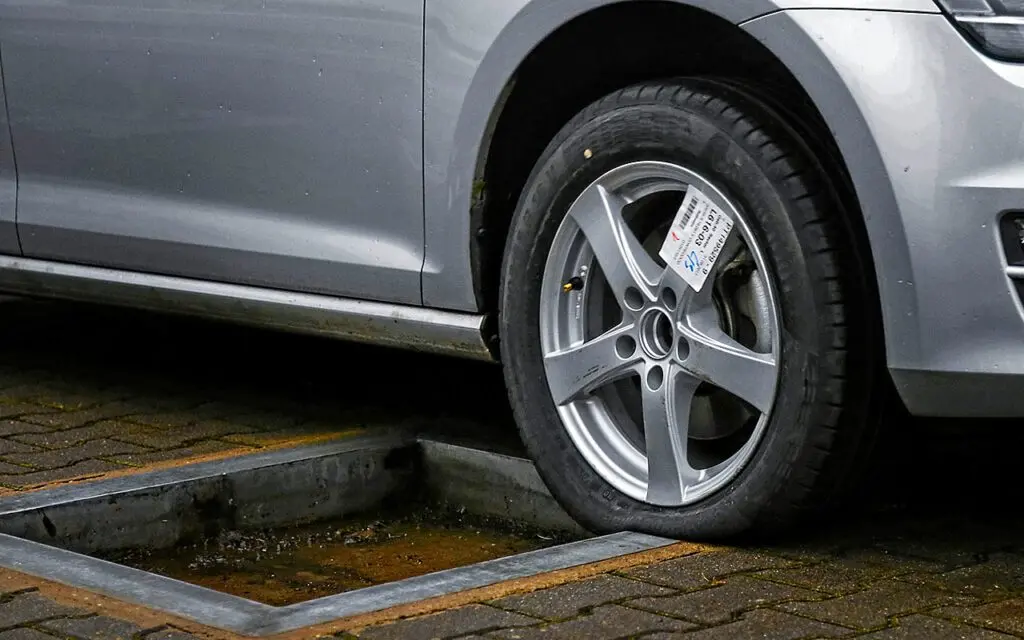
A hernia is formed due to the fact that the tire consists of several layers of material, between which there is a cord of nylon threads that serve as a reinforcing element. When the rubber layer becomes thinner or the threads break, this will necessarily lead to protrusion of the material at the place of failure. The larger the area of damage to the textile layer, the larger the size of the hernia will be.
What is the danger of a hernia on the tire?
Car tires are complex in design. Any, even minor, damage will necessarily affect the running characteristics of rubber. The formation of a bubble on the tire indicates the destruction of the cord part of the product, and it loses its strength.
At high speeds, a wheel with a modified geometry will interfere with the vehicle's handling. This is especially dangerous when performing maneuvers at high speed (overtaking or cornering).
A hidden hernia can be identified by the occurrence of a beating in the steering wheel. Also, in some cases, a stronger heating of the tire may be observed.
Such wheel damage is unpredictable. One driver drives a car with a hernia for more than one thousand kilometers, while another tire fails after just a couple of hundred kilometers after damage.
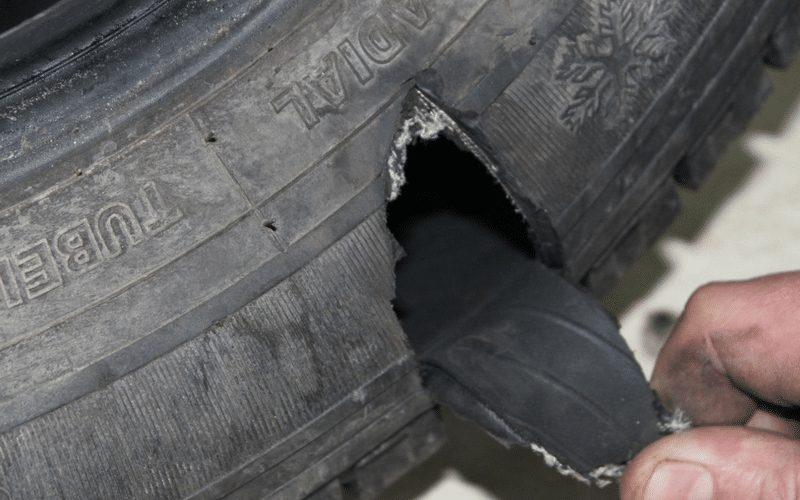
In any case, a hernia is dangerous because it can burst, and a flat tire will pull the car to the side. If a wheel break occurs at high speed, and this happens more often due to increased load, then the car will inevitably cause an accident.
For these reasons, every car owner should inspect tires during a seasonal tire change. If even slight deformations have been identified, it is better to replace the tires in order to prevent a possible problem.
How does a hernia appear on a wheel?
The bubble on the wheel swells when the cord is damaged. Often such damage is not eliminated in any way, so tires with a hernia are disposed of. Further, this wheel cannot be operated, because it will not be possible to balance it due to the instability of the bubble (depending on the load of the car, it can change its shape). If the machine is heavily loaded, a damaged wheel may break.
Basically, a hernia of the wheel appears due to:
- Factory marriage of tires;
- Hitting the car in a serious pothole with sharp edges;
- hitting a curb;
- Accident.
When buying rubber in the secondary market, it is not always possible to recognize such damage, because air pressure is not applied to the walls of the product. But with strong impacts, the rubber will always leave a mark from the impact.
The first steps in the detection of a hernia
When a driver detects a wheel swelling on the road, he needs to take one of the following steps:
- Call a mobile tire service or independently replace the wheel with a dokatka or spare tire;
- In the absence of a spare wheel or a dokatka, you should immediately go to the nearest tire service. In this case, the driver must not accelerate his vehicle faster than 60 km/h. and must keep an increased distance from the car in front, so that in an emergency he can orient himself;
- Flatten the tire a little;
- During the trip, periodically look to see if the bubble on the tire is increasing;
- If the front wheel is damaged, then it can be replaced with the rear wheel.
Can you ride with a hernia on a wheel?
Some motorists do not attach importance to the small bump that appears on the tire, and do nothing. If the road is flat, then such rubber will hold out for some time, but the next hole or small obstacle may be the last.

Neat motorists are sure that the appearance of a lateral hernia is not such a serious defect, because of which you need to immediately run to the store for new tires. Some simply make the pressure in the wheels less, thereby reducing the stress on the fault location slightly.
What are the risks of using a wheel with a hernia
Despite this widespread belief, driving with a damaged wheel will lead to the following negative consequences:
- At speed, the wheel will run out. Due to the imbalance, the wheel bearing will suffer, as well as some suspension elements.
- An imbalance will cause uneven tread wear, and frequent contact patch changes will increase friction with the road. This can cause the tire to heat up. Many people know that when heated, rubber products become more elastic, which in turn will contribute to an increase in the bump.
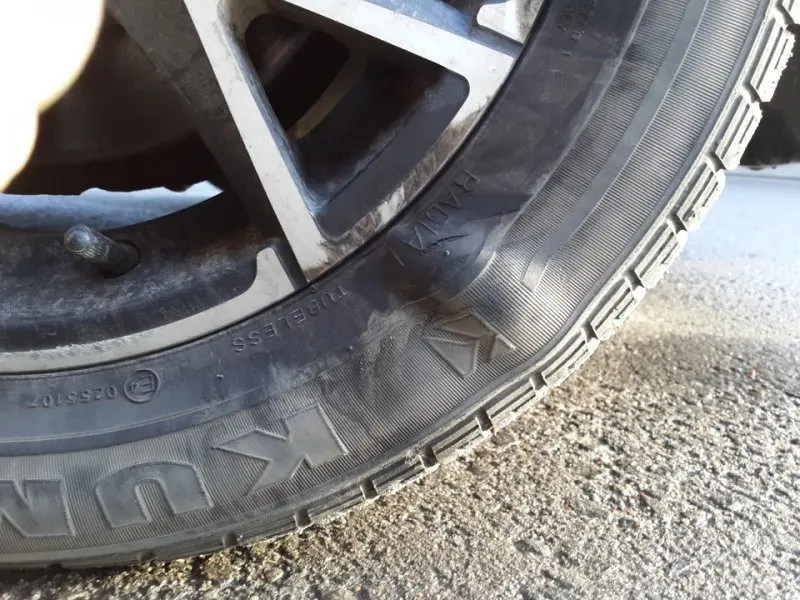
Repairing the chassis or suspension is much more expensive than buying new tires, especially in the case of the latest generation models. In addition, driving with a bump on a wheel will sooner or later cause an emergency due to the fact that the driver cannot cope with the control of a vehicle in which a wheel burst at speed.
How to operate a hernia wheel
According to traffic regulations, tire failure (a clear defect in the form of a cut, abrasion, badly worn tread and other damage) is one of the reasons why the driver should not operate the vehicle. If he ignores this clause of the law, then he will have to pay a fine, and in some cases also pick up his car from the parking lot (but not on his own, but on a tow truck). These reasons should induce drivers to take such malfunctions in a car seriously.
When a motorist detects a hernia before driving, he first needs to fix the problem. But it happens that the swelling is formed after falling into the fossa. If the hernia is large, then you need to replace the damaged wheel with a stowaway or a spare tire (read about what is better to carry with you in the car in another review). In the near future, you need to repair the damaged tire or buy a new one.
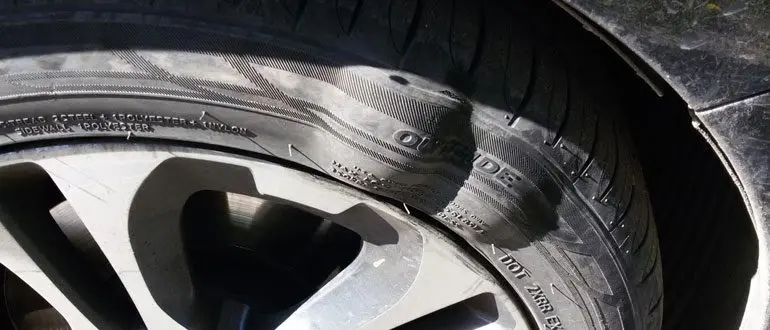
In some cases, the bloating is not yet critical, so some decide that it is still possible to ride such a wheel. In order not to create an emergency, the motorist must operate such a wheel under the following conditions:
- Transport speed should not exceed 60 km / h;
- Abrupt stops should be avoided;
- Avoid driving on poorly paved roads;
- Do not overload the car;
- The number of impacts of the wheel on an obstacle should be minimized, because a sharp deformation of the rubber will lead to an increase in hernia.
Ways to repair a hernia on a wheel
All damage of this type is divided into two categories: repairable and non-repairable. Most motorists cannot visually assess the degree of damage, so they need professional help. The tire technician will remove the tire from the wheel and say if something can be done or not.
Even if the wheel can be repaired, it should be remembered that it is no longer suitable for permanent use, since the patch does not restore the original strength of the product. The repaired wheel can only be used as a spare wheel.
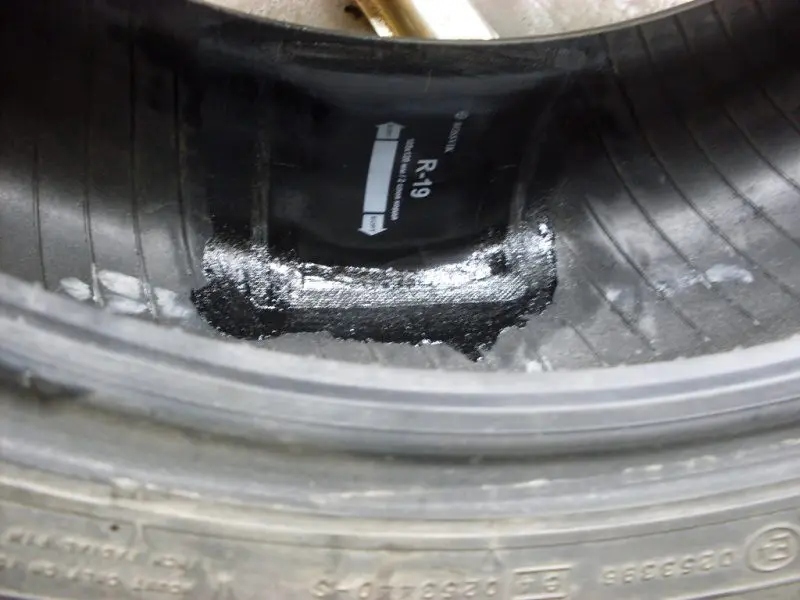
It is not worth making repairs at home, since the effect of such a procedure often does not justify the funds. At the tire service, the process occurs in the following sequence:
- The side of the car with the damaged wheel is hung out, the wheel itself is removed. The technician washes the tire and visually inspects the damage. Often the cause of the hernia is an internal defect, but before the splint is deflated, its surface is marked. When the wheel is not under pressure, the bump will disappear;
- Further, the hernia is cut with a special knife for rubber products;
- A whole piece of another tire is taken and a patch of the required size is cut;
- The removed part of the material is filled with raw rubber, which undergoes a special treatment;
- The next process is vulcanization. During this time, the tire is heat treated to make the raw rubber part of the product. During this operation, you need to follow the technology, so it is extremely difficult to achieve the desired effect at home;
- After the tire has cooled down, a patch is applied to an even layer of caked rubber, but before gluing the surface, it is tedious to prepare it - to clean and degrease;
- Tire repair ends by gluing a patch on the outside and inside of the product. So that an air bubble does not form between the patches and the tire, the surface is smoothed and clamped in a clamp. The tire is left in this state for at least 12 hours.
- The repaired product can be used a day after the procedure.
At first, it will be necessary to double-check the pressure in such a wheel (poor-quality repairs are often the cause of air leakage), as well as whether new bumps appear.
What to do on the road if there is a hernia on the wheel?
If the tire is slightly damaged, the bump will grow slowly. In this case, the driver must first of all plan to buy new tires. However, if such a defect appears abruptly while driving, this means that the damage is large, and instead of a faulty wheel, you need to install a spare tire.
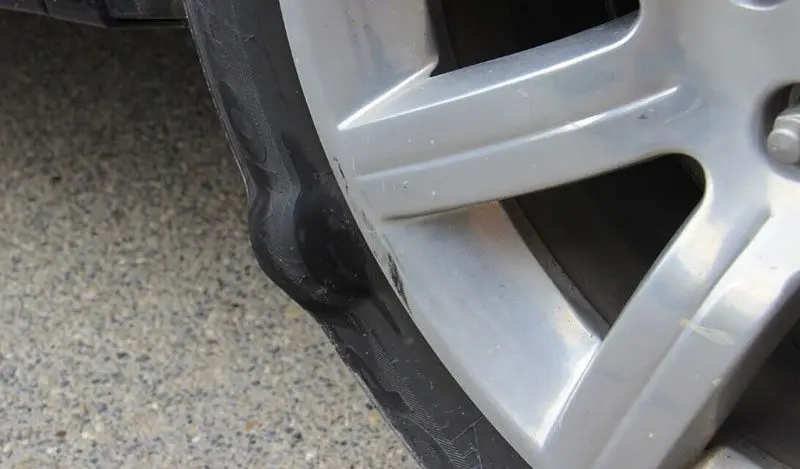
If the driver saves space or lightens his car and does not put a spare tire in the trunk, then the only thing that can be done in this case is to replace the damaged front wheel with the rear one. This will temporarily reduce the load on the hernia. The owner of such a car needs to go to a tire fitting or immediately to a store for new tires. While he gets to his destination, he needs to stop the car and double-check if the bump is growing. You can reduce the load on it by deflating the tire a little.
How long will the tire travel after repair
There is no definite answer to this question, because drivers use different driving styles, and the manufacturer may also use poor-quality rubber material, which is why the patch is poorly glued to the surface. Also, the degree of damage affects the life of such repaired tires.
Some tire shops have a 6 month warranty. There are times (if the driver follows the recommendations listed above) when the tire can last for about two years. However, drivers are not advised to use such tires, as even a well-repaired tire has already lost its original properties. This is only an emergency measure until the motorist buys a new set of tires.
If the side bump can be easily seen, the end bulge will not be so visible. However, it will immediately make itself felt by beating in the steering wheel (if the front wheel is swollen) or by jumping at the rear of the car at low speed. Here is a short video on how to find the damage site:
How to protect the wheel from the appearance of hernias?
Here are some steps a driver can take to help prevent tire inflation:
- Periodically inspect all wheels (this can be done when changing tires seasonally), as well as after a serious blow, for example, on the sharp edges of a deep hole.
- Try to avoid potholes in the road and avoid speeding over sharp-edged obstacles (such as curbs).
- Do not exceed the optimal tire pressure indicator, which is set by the car manufacturer;
- Don't buy aftermarket tires, especially if you're not experienced in identifying wheel damage.
The most that the driver can do to prevent damage to the wheels is a calm driving style. It is always necessary to start and brake smoothly for the safety of not only rubber, but also other important parts of the car. In addition to comfort, this approach of the driver will make his behavior on the road as predictable and safe as possible for other road users.
Related videos
In conclusion, a detailed video on why you should not drive with a herniated tire:


Watch this video on YouTube
Questions and answers:
How much does it cost to repair a hernia on a wheel? It depends on the financial policy of the tire fitting, the size and location of the hernia. Also, the price is influenced by the area in which the workshop is located. Prices range from $ 14 to $ 70.
Can you ride with a small hernia? A hernia is a potential danger of tire bursting at speed, which will definitely lead to an accident. Therefore, it is impossible to drive with a hernia of the wheel, especially if the car is loaded.
Can a hernia be fixed? The position can be temporarily corrected by a camera in the wheel, an additional internal reinforced patch or stitching with a nylon thread and additional vulcanization.
